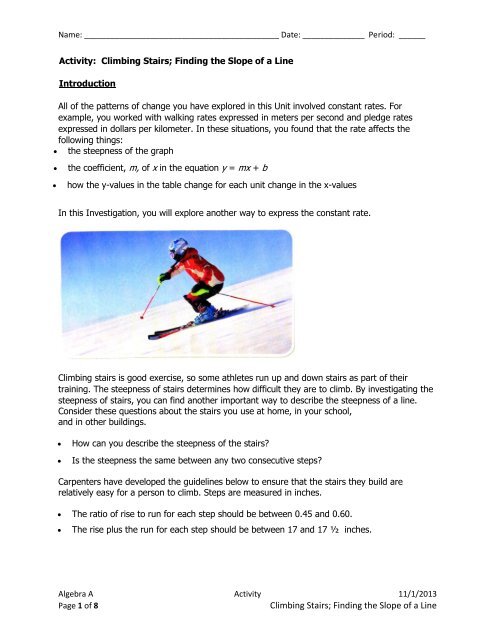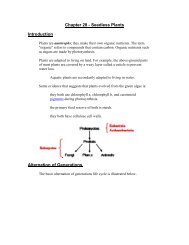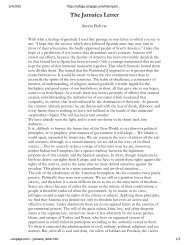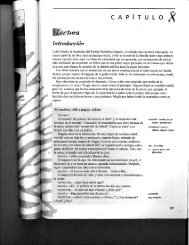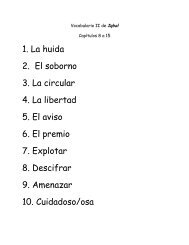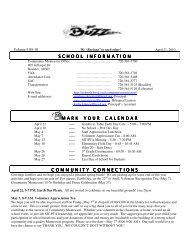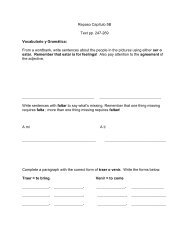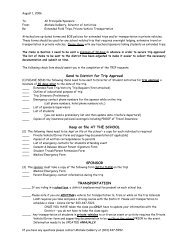11_04_2013 activity climbing stairs MSA 4_1.pdf - Schools
11_04_2013 activity climbing stairs MSA 4_1.pdf - Schools
11_04_2013 activity climbing stairs MSA 4_1.pdf - Schools
You also want an ePaper? Increase the reach of your titles
YUMPU automatically turns print PDFs into web optimized ePapers that Google loves.
Name: ____________________________________________ Date: ______________ Period: ______<br />
Activity: Climbing Stairs; Finding the Slope of a Line<br />
Introduction<br />
All of the patterns of change you have explored in this Unit involved constant rates. For<br />
example, you worked with walking rates expressed in meters per second and pledge rates<br />
expressed in dollars per kilometer. In these situations, you found that the rate affects the<br />
following things:<br />
the steepness of the graph<br />
<br />
the coefficient, m, of x in the equation y = mx + b<br />
<br />
how the y-values in the table change for each unit change in the x-values<br />
In this Investigation, you will explore another way to express the constant rate.<br />
Climbing <strong>stairs</strong> is good exercise, so some athletes run up and down <strong>stairs</strong> as part of their<br />
training. The steepness of <strong>stairs</strong> determines how difficult they are to climb. By investigating the<br />
steepness of <strong>stairs</strong>, you can find another important way to describe the steepness of a line.<br />
Consider these questions about the <strong>stairs</strong> you use at home, in your school,<br />
and in other buildings.<br />
<br />
<br />
How can you describe the steepness of the <strong>stairs</strong>?<br />
Is the steepness the same between any two consecutive steps?<br />
Carpenters have developed the guidelines below to ensure that the <strong>stairs</strong> they build are<br />
relatively easy for a person to climb. Steps are measured in inches.<br />
The ratio of rise to run for each step should be between 0.45 and 0.60.<br />
<br />
The rise plus the run for each step should be between 17 and 17 ½ inches.<br />
Algebra A Activity <strong>11</strong>/1/<strong>2013</strong><br />
Page 1 of 8<br />
Climbing Stairs; Finding the Slope of a Line
The steepness of <strong>stairs</strong> is determined by the ratio of the rise to the run for each step. The rise<br />
and run are labeled in the diagram below.<br />
Problem Set starts here:<br />
A. 1. Determine the steepness of the following set of <strong>stairs</strong> by the portables.<br />
<br />
<br />
The measurement of the rise is: ______________<br />
The measurement for the run is: ______________<br />
<br />
Find the ratio of rise to run.<br />
2. How do the <strong>stairs</strong> you measured compare to the carpenters' guidelines on the<br />
previous page?<br />
Algebra A Activity <strong>11</strong>/1/<strong>2013</strong><br />
Page 2 of 8<br />
Climbing Stairs; Finding the Slope of a Line
B. A set of <strong>stairs</strong> is being built for the front of the new Arch Middle School. The ratio of rise<br />
to run is 3 to 5.<br />
1. Is this ratio within the carpenters' guidelines?<br />
2. Sketch the graph of a line that passes through the origin and whose y-values<br />
change by 3 units for each 5-unit change in the x-values.<br />
3. a. Write an equation for the line in part (2).<br />
b. What is the coefficient of x in the equation?<br />
c. How is the coefficient related to the steepness of the line represented by the<br />
equation?<br />
d. How is the coefficient related to the steepness of a set of <strong>stairs</strong> with this ratio?<br />
Algebra A Activity <strong>11</strong>/1/<strong>2013</strong><br />
Page 3 of 8<br />
Climbing Stairs; Finding the Slope of a Line
The method for finding the steepness of <strong>stairs</strong> suggests a way to find the steepness of a line. A<br />
line drawn from the bottom step of a set of <strong>stairs</strong> to the top step touches each step at one<br />
point. The rise and the run of a step are the vertical and the horizontal changes, respectively,<br />
between two points on the line.<br />
The steepness of the line is the ratio of rise to run, or vertical change to horizontal change, for<br />
this step. We call this ratio the slope of the line.<br />
vertical change rise<br />
slope = <br />
horizontal change run<br />
<br />
<br />
Does the slope change if we take two <strong>stairs</strong> at a time?<br />
Is the slope the same between any two <strong>stairs</strong>?<br />
Unlike the steepness of <strong>stairs</strong>, the slope of a line can be negative. To determine the slope of a<br />
line, you need to consider the direction, or sign, of the vertical and horizontal changes from one<br />
point to another. If vertical change is negative for positive horizontal change, the slope will<br />
be negative. Lines that slant upward from left to right have positive slope. Lines that slant<br />
downward from left to right have negative slope.<br />
Algebra A Activity <strong>11</strong>/1/<strong>2013</strong><br />
Page 4 of 8<br />
Climbing Stairs; Finding the Slope of a Line
The following situations all represent linear relationships.<br />
• For each graph, describe how you can find the slope of the line.<br />
<br />
Describe how you can find the slope of the line that represents the data in the table below.<br />
Information about a linear relationship can be given in several different representations, such as<br />
a table, a graph, an equation, or a contextual situation. These representations are useful in<br />
answering questions about linear situations.<br />
Algebra A Activity <strong>11</strong>/1/<strong>2013</strong><br />
Page 5 of 8<br />
Climbing Stairs; Finding the Slope of a Line
A. The graphs, tables, and equations all represent linear relationships.<br />
1. Find the slope and y- intercept of the line associated with each of these<br />
representations.<br />
2. Write an equation for each graph and table.<br />
Algebra A Activity <strong>11</strong>/1/<strong>2013</strong><br />
Page 6 of 8<br />
Climbing Stairs; Finding the Slope of a Line
B. The points (3, 5) and (-2, 10) lie on a line.<br />
1. What is the slope of the line?<br />
2. Find two more points that lie on this line. Explain your method.<br />
3. Soha observed that any two points on a line can be used to find the slope. How is<br />
Soha’s observation related to the idea of "linearity?"<br />
C. 1. John noticed that for lines represented by equations of the form y = mx, the<br />
points (0, 0) and (1, m) are always on the line. Is he correct? Explain.<br />
2. What is the slope of a horizontal line?<br />
What is the slope of a vertical line?<br />
Explain your reasoning.<br />
Algebra A Activity <strong>11</strong>/1/<strong>2013</strong><br />
Page 7 of 8<br />
Climbing Stairs; Finding the Slope of a Line
D. 1. Compare your methods for finding the slope of a line from a graph, a table, and an<br />
equation.<br />
2. In previous Activities, you learned that linear relationships have a constant rate of<br />
change. As the independent variable changes by a constant amount, the dependent<br />
variable also changes by a constant amount. How is the constant rate of change of<br />
a linear relationship related to the slope of the line that represents that<br />
relationship?<br />
Algebra A Activity <strong>11</strong>/1/<strong>2013</strong><br />
Page 8 of 8<br />
Climbing Stairs; Finding the Slope of a Line


